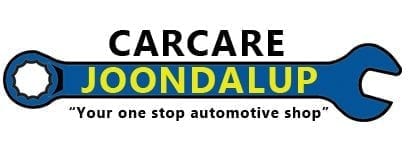Wheel alignments are one of the most important maintenance procedures for your vehicle. Properly aligned wheels ensure that your car drives straight and true, reducing wear and tear on the tyres. This simple guide will provide you with all the necessary information you need to know about wheel alignments so that you can take proactive steps to help keep your car running smoothly and safely for many years to come.
What is a Wheel Alignment?
It is the process of manually adjusting the angles of the wheels so that they are perpendicular to the ground and parallel to each other. There are three main angles that are adjusted during a wheel alignment:
- Camber – the angle of the wheels when viewed from the front or rear of the vehicle. If the wheels tilt inward it is known as negative, while outward is known as positive camber.
- Caster – the angle of the steering axis when viewed from the side of the vehicle. If the steering axis tilts toward the front of the vehicle, it is known as positive caster. If it tilts toward the rear of the vehicle, it is known as negative caster.
- Toe – the angle of the wheels when viewed from above or below the vehicle. If the wheels are pointing inward toward each other, it is known as toe-in. If they are pointing outward, it is known as toe-out.
Proper alignment helps to ensure:
- Improved handling and stability – Your vehicle will handle better and steer more smoothly and predictably.
- Reduced tyre wear – Misaligned wheels can cause uneven wear on your tyres, which can shorten their lifespan and lead to costly replacements.
- Improved fuel efficiency – Experience better fuel efficiency by a reduction in rolling resistance.
- Safer driving – Your vehicle will experience better braking performance, making it easier to stop quickly in emergency situations.
How to Tell When a Wheel Alignment is Needed?
There are some common signs that your wheels are out of alignment. Your car may start pulling to one side when you are driving, the steering wheel might be vibrating or feel loose, your tyres may be wearing quickly even though they aren’t very old, or you may have uneven wear on the tyres.
Even if you aren’t experiencing any of these signs, your wheels may still need minor adjustment. Misalignment of the wheels can happen at any time and is often caused by simple issues, like hitting a pothole in the road. It is recommended that you have your vehicle checked twice per year, or around every 10,000km – whichever comes first.
If you have noticed any symptoms of misalignment or it’s a been a while since your wheels were last checked, book your car in with your local automotive professional for a wheel alignment. Joondalup locals can rely on Car Care for fast and affordable tyre, wheel, and automotive services.
Is a Wheel Alignment Necessary When New Tyres are Fitted?
It is strongly recommended that you have a wheel alignment carried out at the same time as your new tyres are fitted. Many mechanics and tyre shops will offer a wheel alignment as standard when tyres are replaced, but make sure you ask if you are unsure.
How Long Does it Take?
Typically, you should expect to wait for around one hour for your wheel alignment service. However, if your vehicle has any damage to the suspension system, track rods, and other parts, the process may take longer, especially if there are significant repairs needed for the wheels to be aligned correctly.
How Much Will it Cost?
Depending on the make of your car and the adjustments that are needed, you should budget between $150-$250, or even more in certain cases.
Looking for a Reliable Car Mechanic? Joondalup’s Car Care is Your Trusted Choice
If you have noticed anything unusual going on with your steering, tyres, or your car in general, you should it checked by a professional mechanic as soon as possible. They will be able to diagnose the problem and offer effective solutions to ensure your car remains safe on the road. Book in for a service with our team online or call us today on 08 9300 9796.


